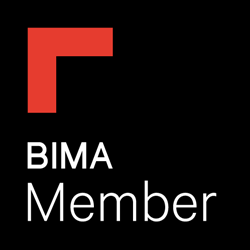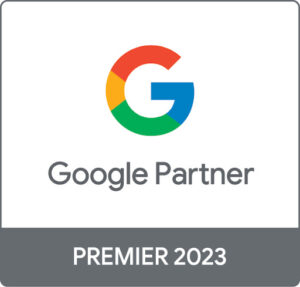Anyone that works in search marketing knows that Google is constantly tweaking its search ranking algorithm (reportedly up to 500 times per year) to improve how websites are ranked and search results are delivered to users.
There are multiple search algorithms that Google uses to understand, index and rank websites. Here are the main Google algorithm updates explained:
1. Google Panda Explained
Officially launched in 2011, Google Panda penalised low-quality sites and rewarded sites that were higher quality.
What is the Google Panda update?
The Panda algorithm update focuses on on-site SEO. It pushed higher quality sites up the rankings while simultaneously shifting thinner or lower quality sites down the rankings.
How Google Panda affected our clients
When Google Panda hit in 2011, we experienced a significant surge in the rankings for our client’s websites while many other sites, even the big boys, were punished. The increase happened because we understood that Google wanted sites to create compelling, valuable content for our their visitors instead of weak and worthless content that’s over optimised for SEO purposes.
What you should do to avoid a Google Panda penalty
The key thing here is to stop writing rubbish copy for the sake of ranking a page, it doesn’t work and hasn’t worked for ages. If you’ve experienced a sudden drop in organic search traffic, then you may have been hit by a Panda penalty.
To recover from a Panda penalty you should focus on the following:
- Write for your readers, not Google.
- Improve all low-quality content on your site.
- Remove or repurpose all duplicate content.
- Create valuable resources that help your audience.
- Focus on keeping your visitors engaged and on your website.
- Improve site speed and usability.
- Stop over optimising for Google – no more keyword stuffing!
2. Google Penguin Explained
Officially launched in 2012, punishing websites that bought spam links and tried to cheat their way to the top.
What is the Google Penguin update?
Unlike Panda, the Penguin algorithm update focuses on off-site SEO. It was Google’s way of tackling Black Hat SEO tactics like spam linking, link farming and purchasing links to manipulate search results.
How Google Penguin affected our clients
We’ve never, and will never use spam or Black Hat tactics with our SEO campaigns. We simply don’t need to.
However, that doesn’t mean that Penguin didn’t affect our customers. In fact, Google rewarded our client’s sites with better search rankings because we employed honest and ethical SEO techniques.
What you should do to recover from a Google Penguin penalty
If you are struggling to rank any pages on your website, then you may have been hit by a Google Penguin penalty.
To recover from a Penguin penalty can take time, but it is possible. First, you need to change your SEO strategy by doing the following:
- Stop buying links.
- Stop getting links from private blog networks (PBNs).
- Disavow and clean up your spammy link profile.
- Keep an eye on your backlink profile.
- Proactively focus on earning good quality links from authoritative websites.
- Produce ‘link worthy’ content that helps your customers and promote it to your audience.
- Build up your site’s trust signals – stay on the ‘right side’ of Google.
3. Google’s RankBrain Explained
Officially announced in 2015, RankBrain is Google’s AI learning algorithm.
What is Google’s RankBrain update?
Perhaps not as well known as other algorithm updates, RankBrain was one of the most significant updates in years. RankBrain is Google’s name for a machine-learning AI system which is part of its overall search algorithm. Its primary use is to sort through billions of search webpages to return the best results for its user’s search queries.
How RankBrain affected our clients
Well, across the board RankBrain hasn’t had much of a noticeable impact on the SEO world. RankBrain mostly helps Google understand longer-tail, complicated, ambiguous or poorly structured keyword queries.
It’s hard to say what kind of influence RankBrain will have to SEO if any, but one thing is for sure – it will continue to evolve over time and deliver better search results for Google’s users.
4. Google Hummingbird Explained
Officially launched in 2013, a core update that promotes conversational and semantic search results.
What is the Google Hummingbird update?
When launched back in 2013, the impact of Google’s Hummingbird update on search results was massive. It seriously shook up the way webpages were ranked and how SEOs optimised them. Hummingbird was all about the use of synonyms instead of focusing on singular keywords, and therefore enabling Google to understand the context of pages.
Hummingbird changed the future of search marketing for us all, subtly affecting 90% of all searches. It focused on understanding the meaning of all search queries and the user’s intent, transforming the SERPs that Google returned for users more ‘human’ and less ‘sterile’.
How Google Hummingbird affected our clients
We experienced a massive increase in rankings and organic traffic because of schema markup and the diverse range of content we helped our clients produce to help answer their audience’s search queries. Google rewarded use because we followed the best practice ranking rules and kept our client’s websites clean of weak content.
How you can make the most of Google’s Hummingbird update
The way we use Google has changed in the past few years, and that’s largely down to Hummingbird altering the way search results are delivered to users.
- Diversify the content your business produces – create videos, infographics, long form blogs, shorter blogs, local business listings, social media posts, podcasts, voice search, infographics, etc.
- Make the most of Schema and data markup where possible.
- Use natural language, stop focusing on individual keywords and write copy that concentrates on keyword ‘topics’ instead.
- Regularly create great content that addresses the intent of the person you’re targeting – solve their questions, problems and worries.
- Don’t forget about site speed and making your website a better experience for your visitors.
5. Google Pigeon Explained
Officially launched in 2014, dramatically altering local SEO with how Google returned local results for localised search queries.
What is the Google Pigeon update?
Once again, Google Pigeon shook up the SEO world as a core algorithm update that focused on how Google delivered local SEO results to users. Overall, it increased the rankings of local listings in search – returning highly relevant, localised results to users depending on where they were searching from.
How Google Pigeon affected our clients
Local SEO has always been an important part of our SEO process, and with the Pidgeon update, our client’s experienced a healthy rise in localised keyword rankings as well as a general increase in organic traffic.
Localised keywords are usually much easier to rank websites. Although search volume is typically lower for local keywords, we’ve found that users have more intent and therefore are more likely to convert into customers.
Locality matters in the digital, globalised world we live in, and although the update has received mixed reviews since it launched, Google’s Pigeon update was a significant step forward for our client’s SEO campaigns.
How you can get the most out of Google’s Pigeon update
- Claim and optimise your local business listing in Google Maps, Google Places for Business and Google Plus.
- Create optimised landing pages on your website that reflect where your business is located and how it helps customers in those locations.
- Keep your location data accurate and accessible for Google to index.
- Invest time and energy into local SEO strategies like getting reviews on Yelp and other business directories.
- Make your website relevant to the audience you are targeted, based on where they live and how your services help them.
- Use Google Analytics to find out where most of your best customers are located and optimise your website and language for those areas.
Here are 5 more big updates from Google that changed search marketing for the better:
1. The AdWords shakeup
As recently as February 2016 Google changed the game for AdWords listings by removing the right-hand side ads and adding a fourth ad to the top of the SERPs. While this was a change to paid search with no bearing on the organic ranking algorithm, it did have a significant impact on click-through rates for both organic and paid search results.
2. The dreaded ‘Mobilegeddon’ update
In 2015, Google launched the first major mobile-related search algorithm update. At first, Mobilegeddon has little impact on mobile rankings for many websites. However, the desired effect was met as many brands have since taken mobile web development seriously by taking more of a mobile-first approach when designing their sites. This update only affected mobile searches.
3. Google Phantom update
In May 2012, loads of websites started reporting significant traffic and organic ranking drops. Google Phantom, also known as ‘the quality update’, was another biggie and felt like another step towards the next generation of better search marketing. Kind of like an extension to the Panda update, Phantom was all about the ‘quality signals’ that websites had.
4. Payday Loan update
Back in 2013, Google announced a step towards removing more spammy results by punishing those that were part of bad link networks like porn, gambling, payday loans and anything of poor quality.
5. Knowledge Graph update
Officially launched in 2012, the Knowledge Graph update was the predecessor of Hummingbird and semantic, smarter search. Now, the Knowledge Graph is so integrated into the way we receive results from Google we barely notice it. That’s how big the Knowledge Graph update was for search marketing.
All of Google’s algorithms are regularly updated and they all form the basis of where your website ranks in searches for particular pages. It’s always important to follow best practice SEO guidelines if you want a healthy site that ranks well in Google.








